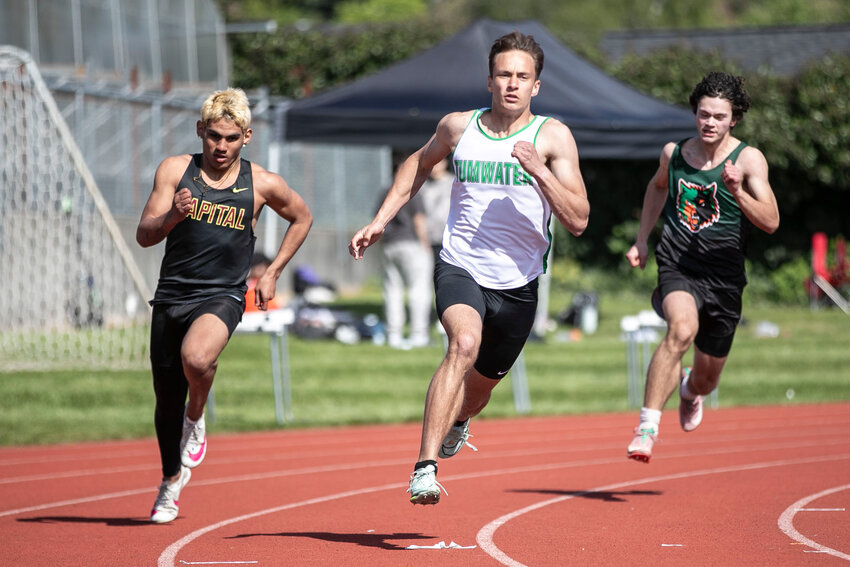It was too little, too late for Norwich City as they lost 2-1 to Burnley at Turf Moor on Friday, with Johannes Hoff Thorup's setup totally different after half-time. Ben Lee is a City season ticket holder and author of the NCFC Analysis social media account, who unpicks games with an analytical report highlighting tactical strengths and weaknesses. This is what Ben made of events at Turf Moor on Friday.
Burnley vs Norwich: New Half, New Approach Score: 2 – 1 Possession (%): 45 – 55 Passes: 418 – 495 Shots: 8 – 12 xG: 0.94 – 1.59 Base Formations: Following a promising performance against Sunderland at Carrow Road, Johannes Hoff Thorup made three changes to his side, with McConville, Sorenson, and Marcondes replacing Nunez, Schwartau, and Sargent, as Thorup switched to a 3-4-3 base formation.

Scott Parker made just one change to his Burnley side, as Hannibal replaced Laurent in the host’s usual 4-2-3-1 setup. During Norwich’s goalkeeper restarts and in their deep build-up phases, McLean (23) inverted into a midfield three, Fisher (35) advanced out wide on the right, and Slimane (20) dropped against the touchline on the opposite side, almost into a left-back position. With City creating this 3-3-4 shape, Burnley pressed from their 4-2-3-1 base, but Cullen (24) typically stayed deeper than Brownhill (8) on the host’s left.
Burnley’s right-winger jumped to press Gunn (1) when he received the ball from Cordoba (33), leaving Norwich’s left centre-back free. McLean (23) then dropped to offer a bounce pass to the free man, but he was tightly marked by Brownhill (8), who fouled City’s captain in the box. With Burnley’s centre-forward and right-winger ready to press Duffy (4) and Cordoba (33), respectively, and their attacking midfielder staying tight to Wright (16), Norwich never really exploited the one weakness in the host’s high press.
Given Cullen (24) had dropped out of the high pressing unit, Anthony (11) was caught in a 2v1 against Sorenson (19) and McConville (15) on Burnley’s left. Thorup’s men should’ve done more to test this potential weakness by playing out to McConville (15). If the left-winger had responded by pressing high, Sorenson (19) could’ve moved out towards the touchline to prevent Hannibal (28) from jumping to press him.
This would either have allowed City to escape via Sorenson (19), or it would’ve forced Cullen (24) back into the high press, leaving a 4v4 in the last line. Instead, however, Thorup’s men frequently played out to their left, where Burnley were able to press man-to-man on the ball side while maintaining a 5v4 in the last line. This meant City were often forced long into the front four, who struggled to consistently retain possession.
In settled phases of possession higher up the pitch, Norwich remained in a 3-3-4 structure in the first half, with McLean (23) inverting into midfield from the left and Fisher (35) advancing into the last line on the right of City’s new settled-play shape. In these phases, Burnley dropped into a 4-4-2 mid-block, as Hannibal (28) moved into a front two, while Anthony (11) stayed deeper on the left to stay tight to Fisher (35). With the Burnley winger in this deeper role on the left, the hosts occasionally created a mid-block with a back five, thereby maintaining their plus one against Norwich’s attacking four.
But Scott Parker’s side were quick to jump into an aggressive mid-press when Norwich played backwards or took a heavy touch, as Hannibal (28), Flemming (19), and Edwards (22) pressed City’s back three. With this pressure often rushing Thorup’s men into a high-risk central pass, the visitor’s 3-3 rest defence was tested by several fast Burnley transitions. Indeed, despite the extra man in Norwich’s new rest defence, Fisher’s (35) advanced position on the right meant when Burnley counter-attacked on that side, McConville (15) was dragged out wide, leaving space behind him for a through ball into the box.
The visitors eventually conceded from one of these fast transitions after McLean (23) played a loose free kick into midfield, where Brownhill (8) intercepted and found Anthony (11) to his left, who made it 2-0 with a deflected shot. To provide a lower-risk out-ball, McLean (23) began to drop back out to the left, almost creating a back four. This allowed Norwich to shift the ball over to the left, where City’s captain had more time to pick a forward pass.
Many of Burnley’s goal-kicks were played long, but when the hosts did play out from the back, they did so through their 4-2-3-1 base formation, while Norwich pressed from a 3-4-3 shape. In settled phases of possession, Burnley transitioned into a fluid 2-3-5 shape, as Brownhill (8) advanced towards the last line, leaving Cullen (24) as a single pivot between two inverting full-backs. In response, Norwich dropped into a 5-4-1 mid-to-low block.
Despite occasionally moving into a 5-2-3 mid-press, City’s tendency to drop off made it far too easy for Brownhill (8) and Hannibal (28) to receive in space between the lines. In the build-up to Burnley’s opening goal, a passive Norwich front line and a curved back five allowed Cullen (24) time to find Hannibal (28) running in behind, as McConville’s (15) body positioning saw the ball chipped over his head and into the penalty area. The lack of attackers up front in Norwich’s 5-4-1 setup also made it difficult for Thorup’s men to both counter-attack after regaining possession, and counter-press high up after losing it.
In the second half, after Nunez (26) replaced Sorenson (19), and Sargent (9) replaced McConville (15), Norwich changed their setup both with and without the ball, as they returned to a more proactive, possession-based approach. In settled phases of possession, Norwich created their typical 2-3-5 shape, as McLean (23) continued to invert into midfield: this time ahead of two centre-backs and behind a five-man front line, with Sargent (9) often dropping into space between the lines to receive the ball. After returning to this approach, Thorup’s men dominated much of the second half after having 64 percent possession and accumulating 1.
10xG to Burnley’s 0.07. Norwich’s more proactive approach without the ball supported this dominance, as City returned to the 4-4-2 structure they’ve created in recent weeks.
But it was still too easy for Burnley to access the space between the lines. With Norwich jumping into a 4-4-2 high press, the visitors also found it easier to force turnovers, but they did allow Burnley an easy escape halfway through the second half when Sainz (7) left a centre-back free and Nunez (23) jumped to press high, leaving Hannibal (28) in space behind. This left Stacey (3) isolated in a 2v1 after the full-back replaced Marcondes (11) on the right side of City’s midfield four.
Despite Norwich’s second-half dominance, the visitors relied on finally converting a well-drilled set-piece to set up a tense conclusion to Friday night’s affair. Ultimately, however, it wasn’t enough to avoid a loss under the lights at Turf Moor after a poor first half from Thorup’s men. With just four games to go, City’s season is now about generating as much optimism as possible ahead of an important summer transfer window.
Thorup will be hoping that more of Friday’s second-half promise will do exactly that..
Sports

Ben Lee: Canaries tactical analysis of Burnley loss

Tactical expert Ben Lee analyses Norwich City's 2-1 Championship defeat to Burnley at Turf Moor.















